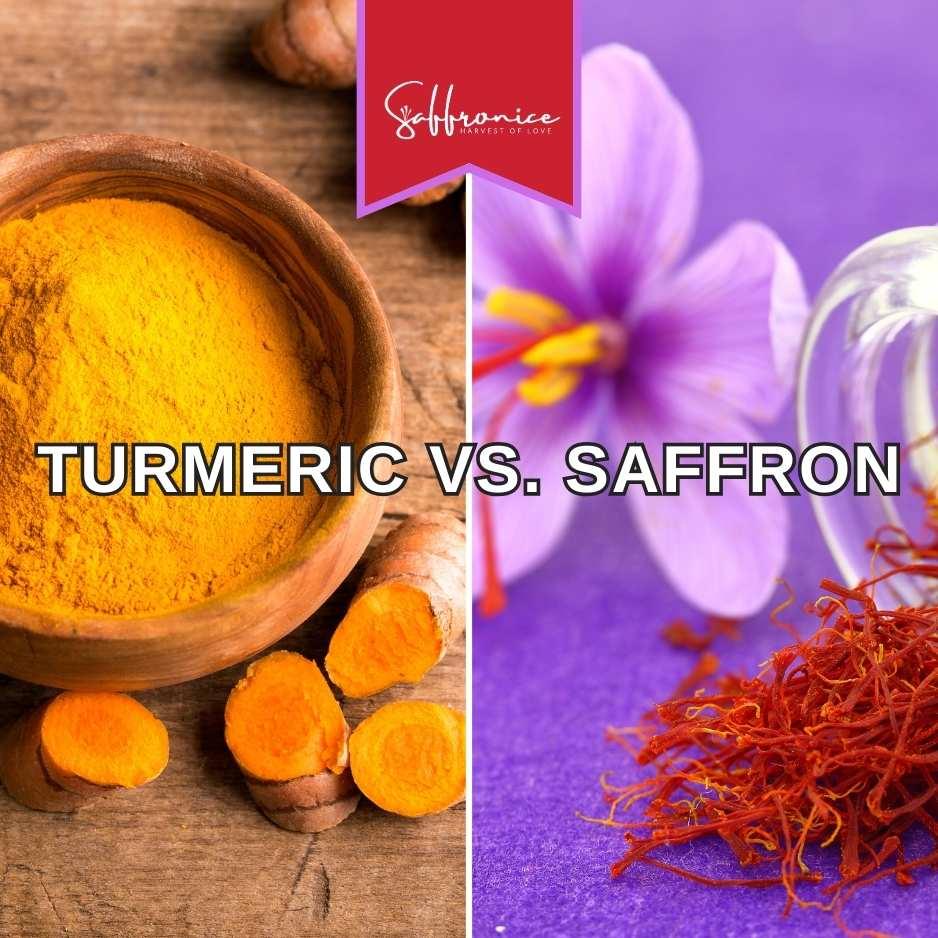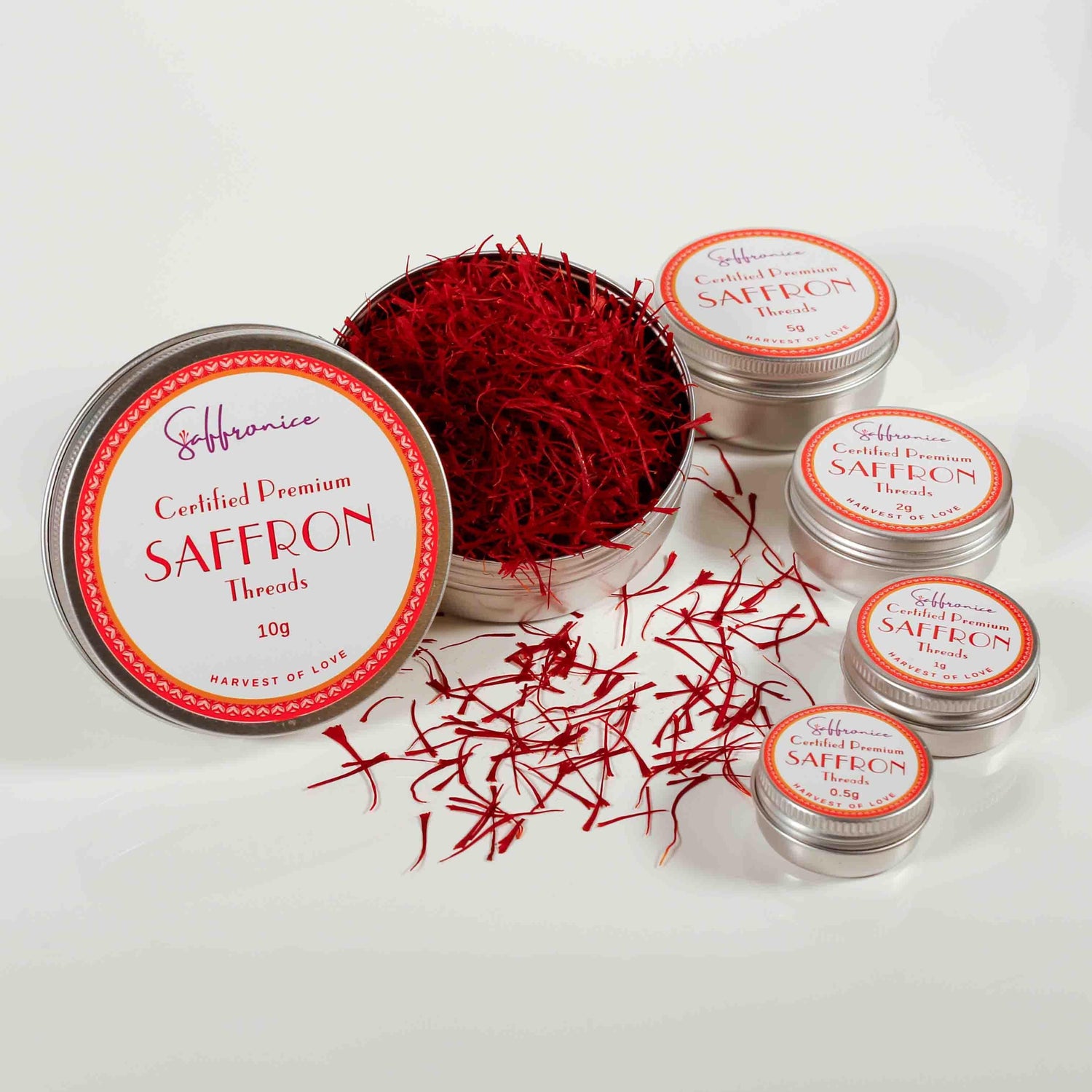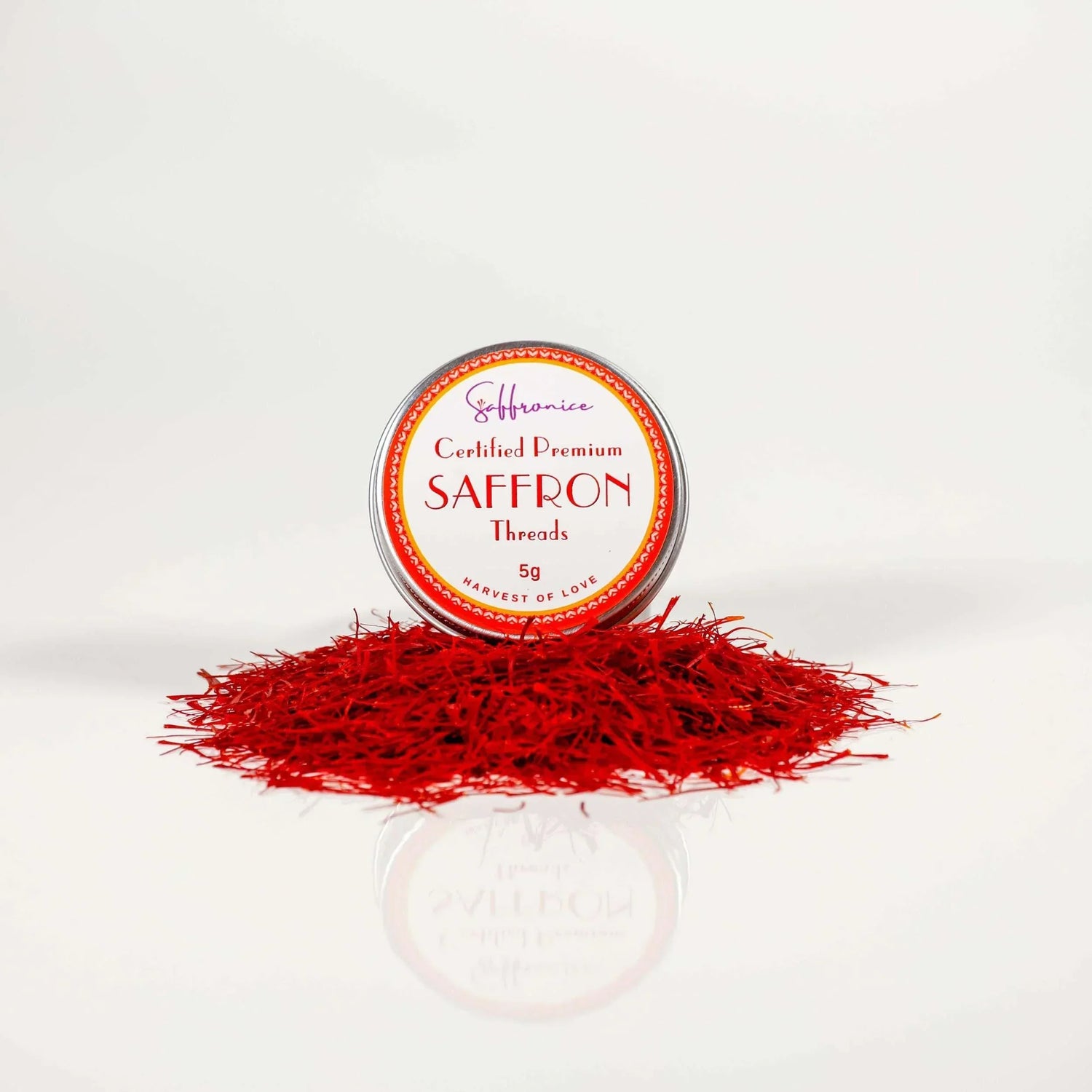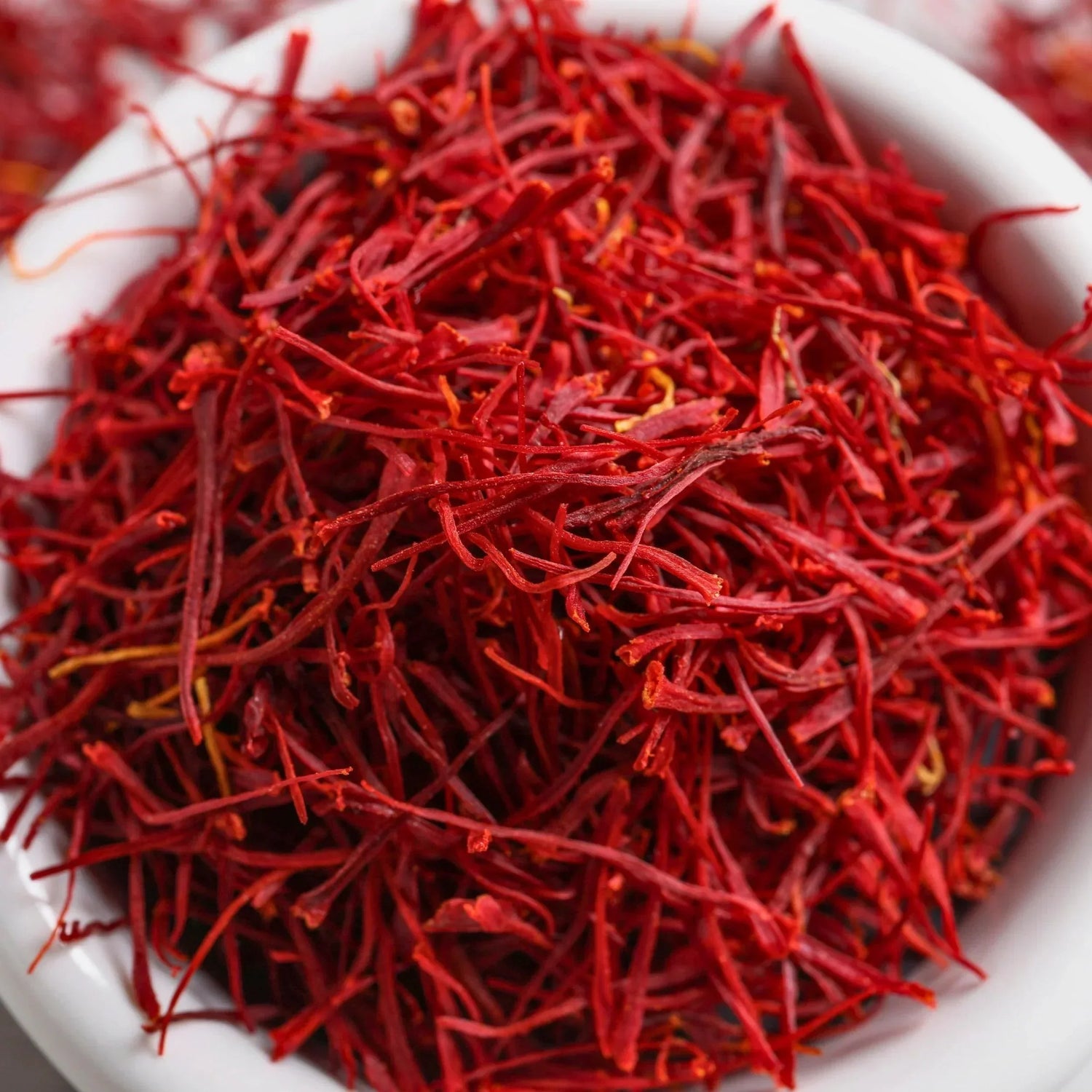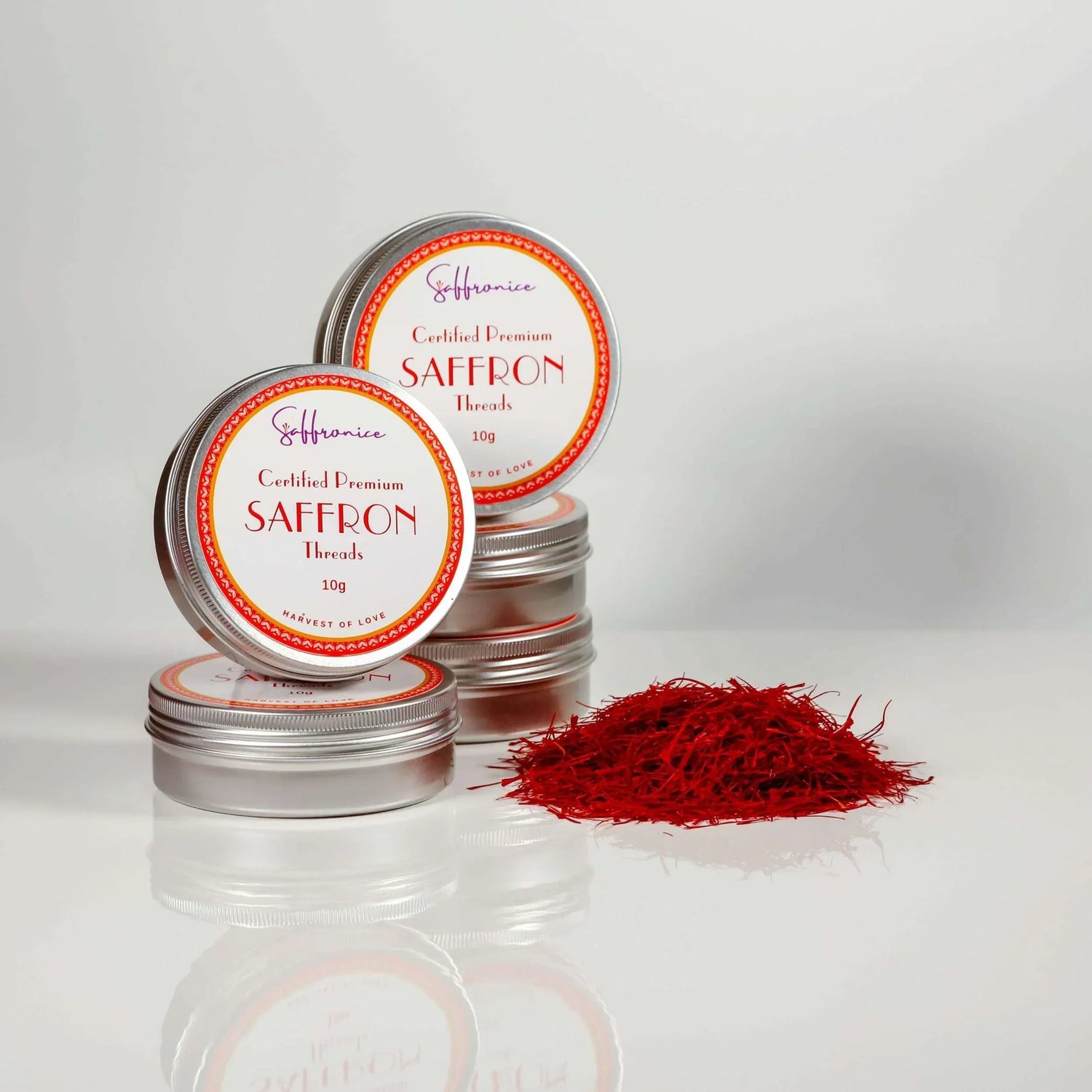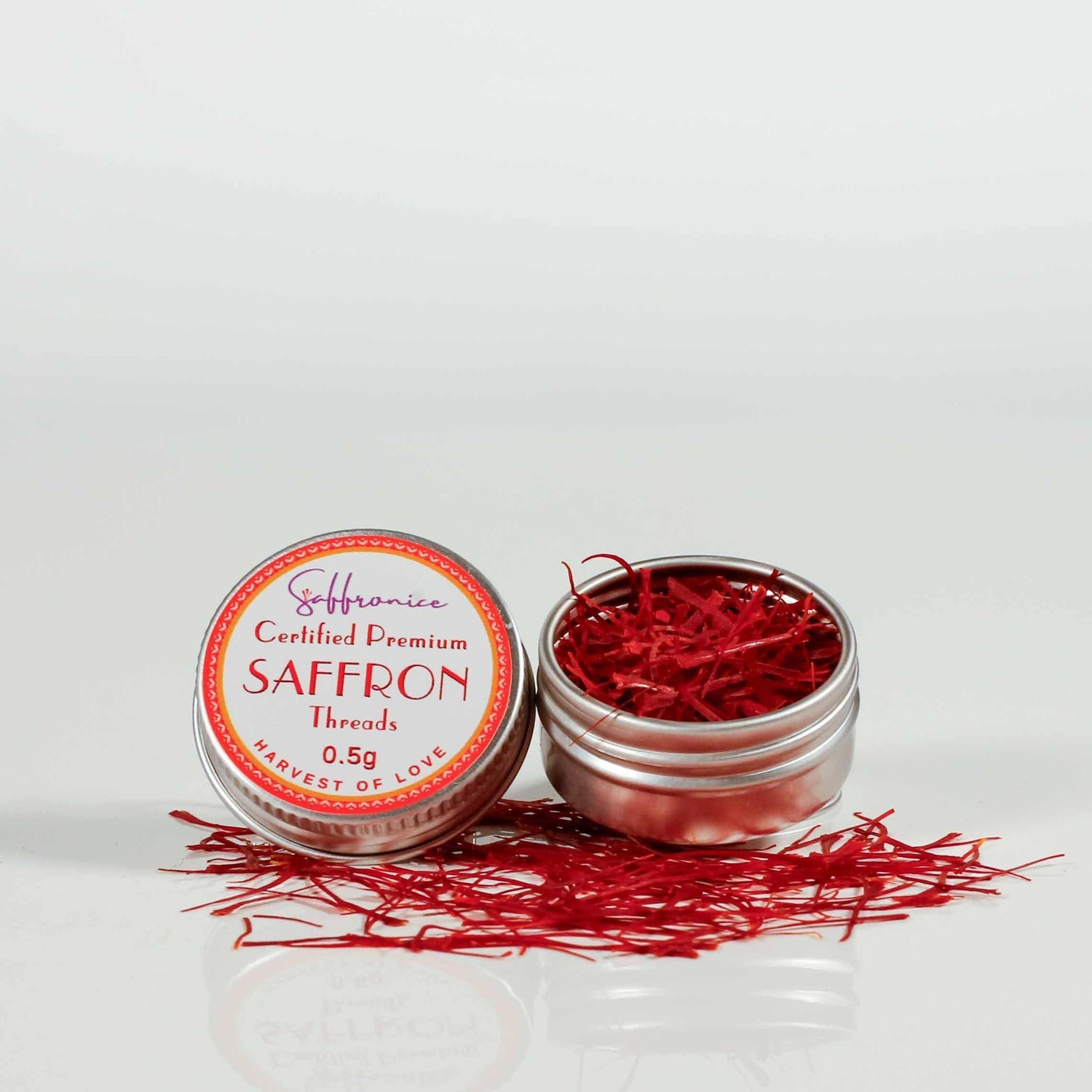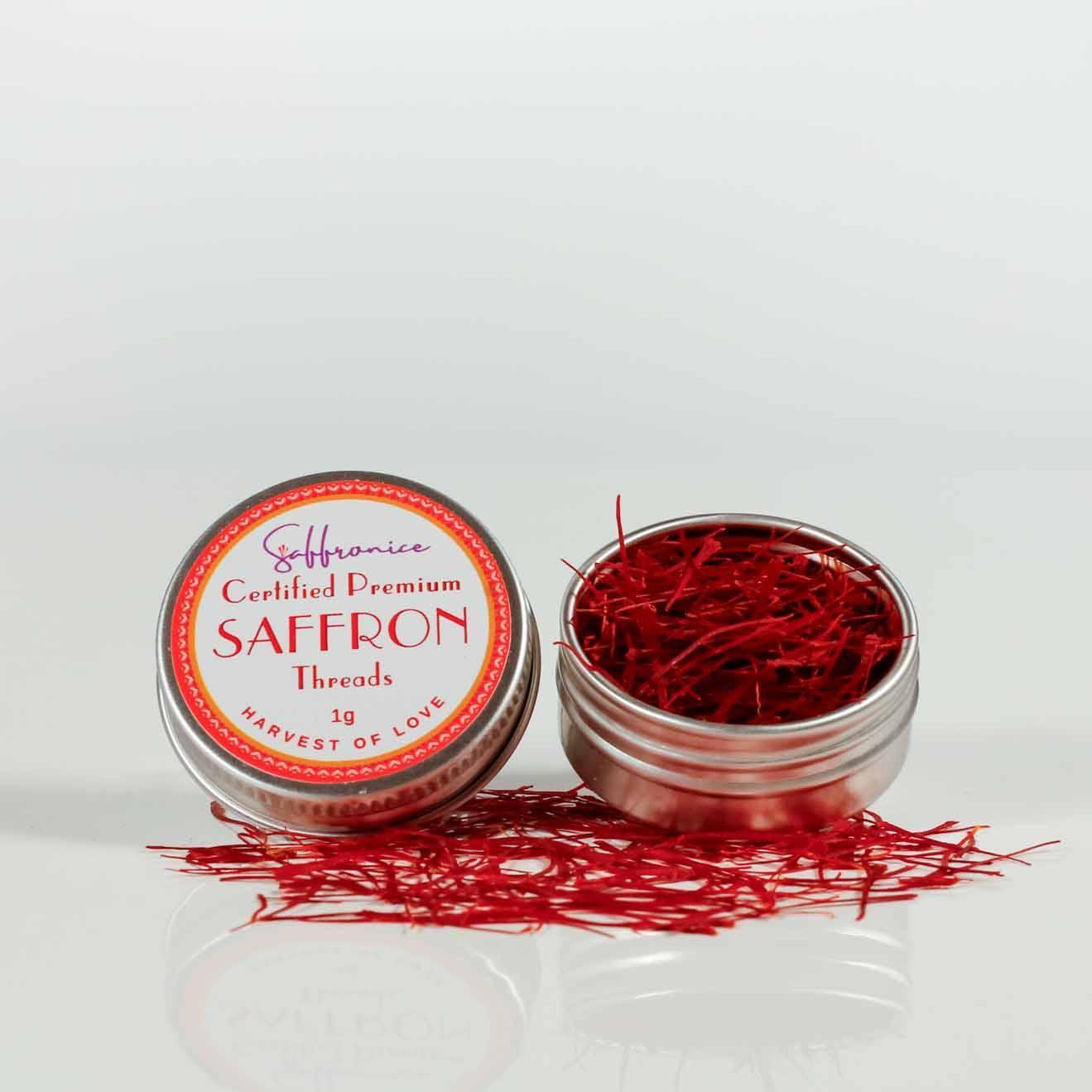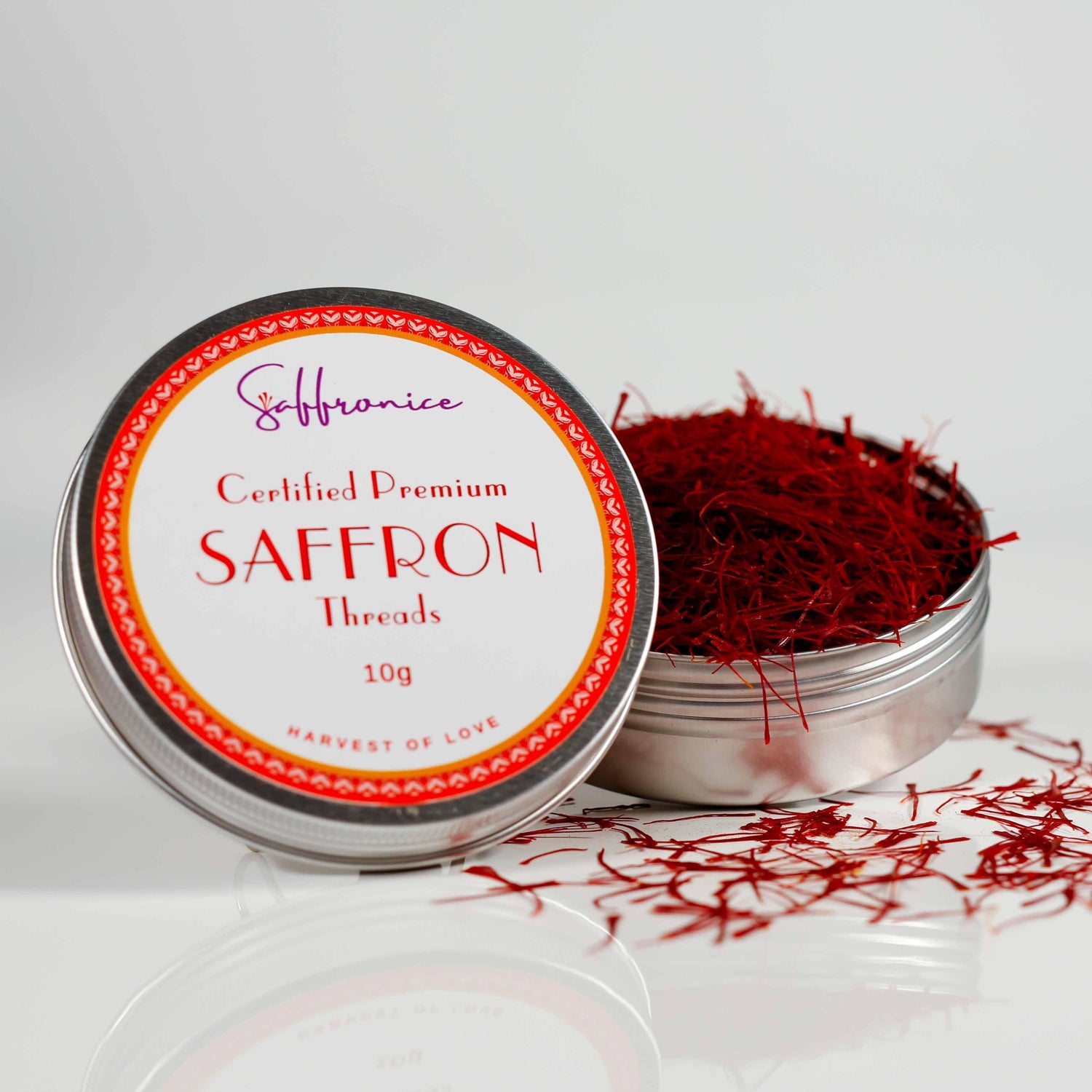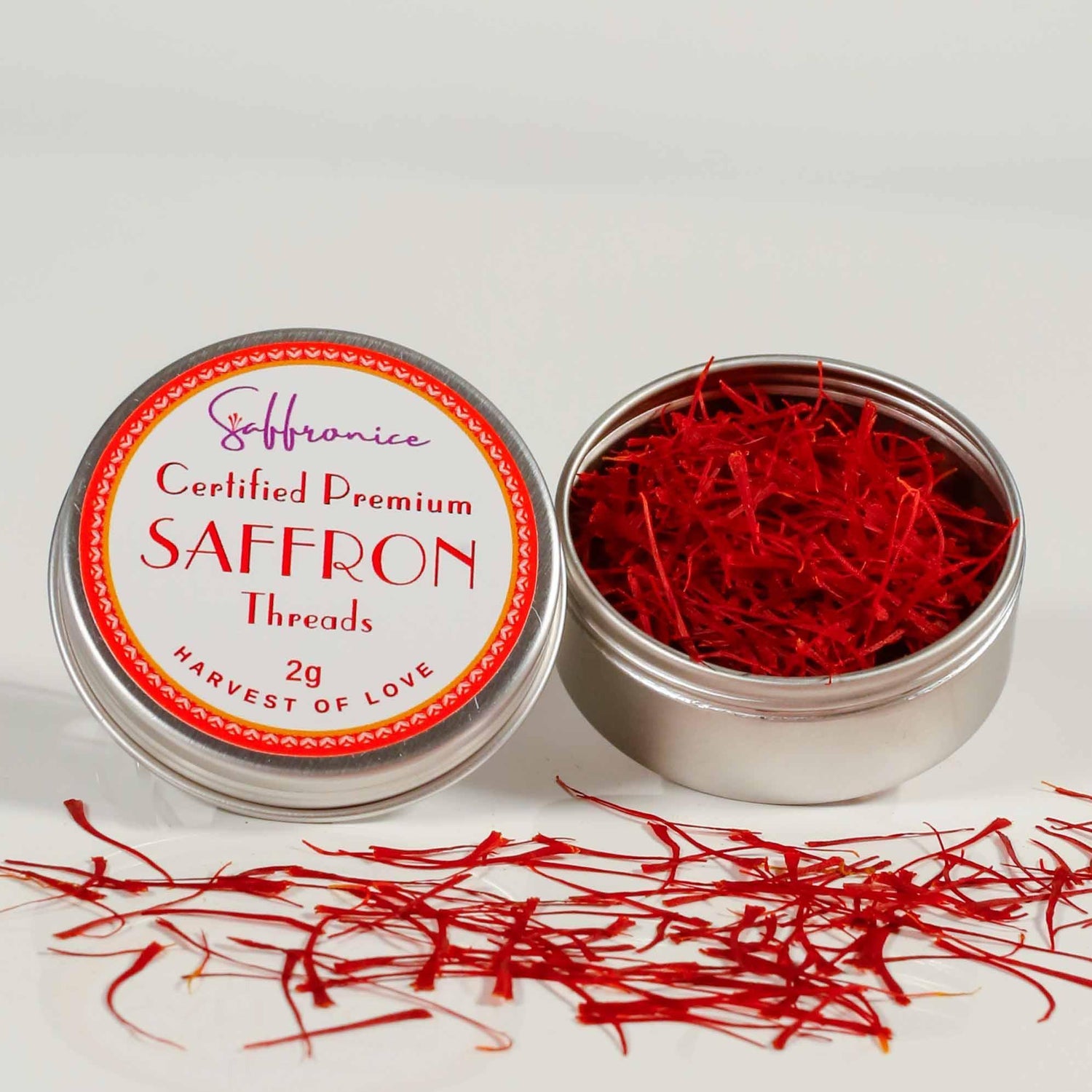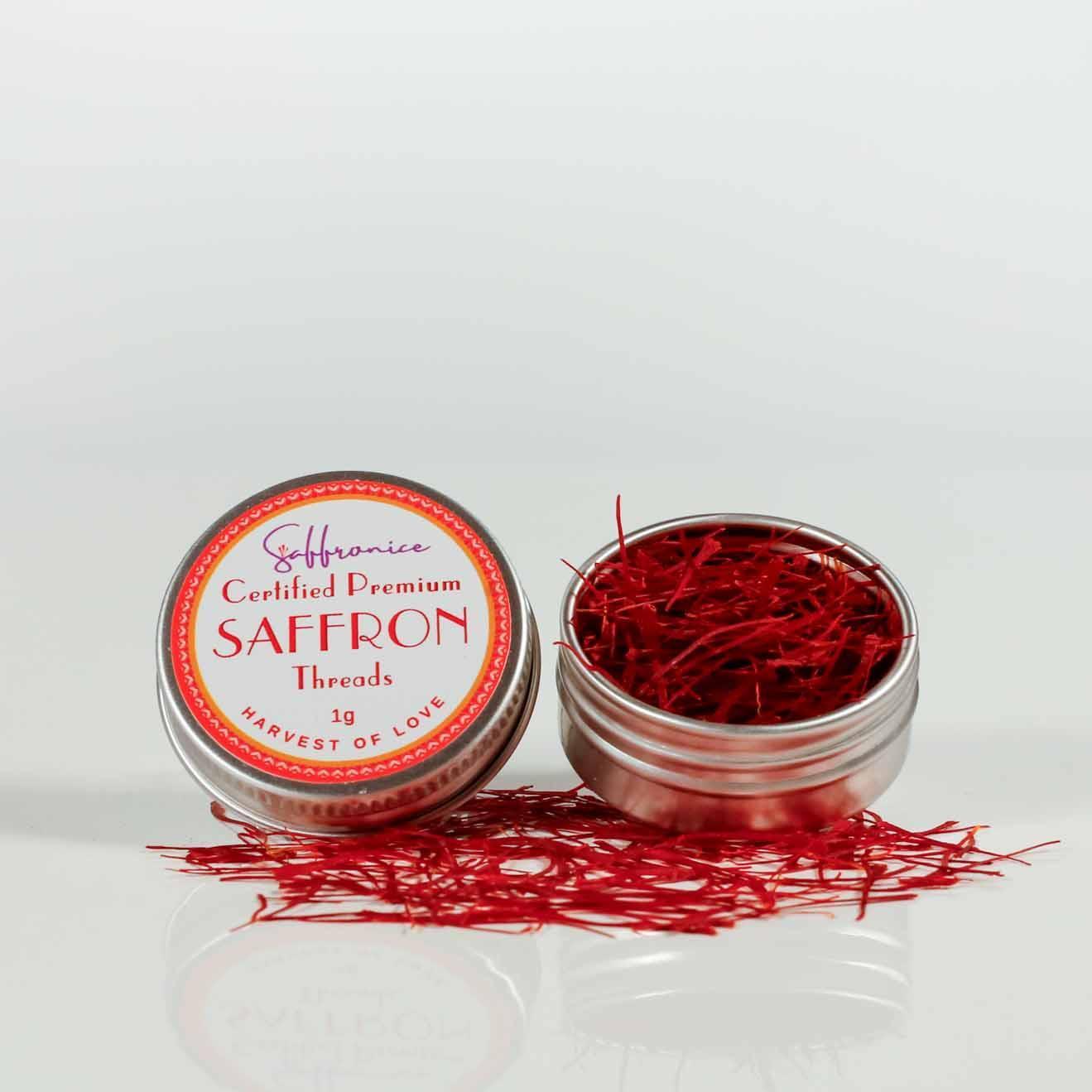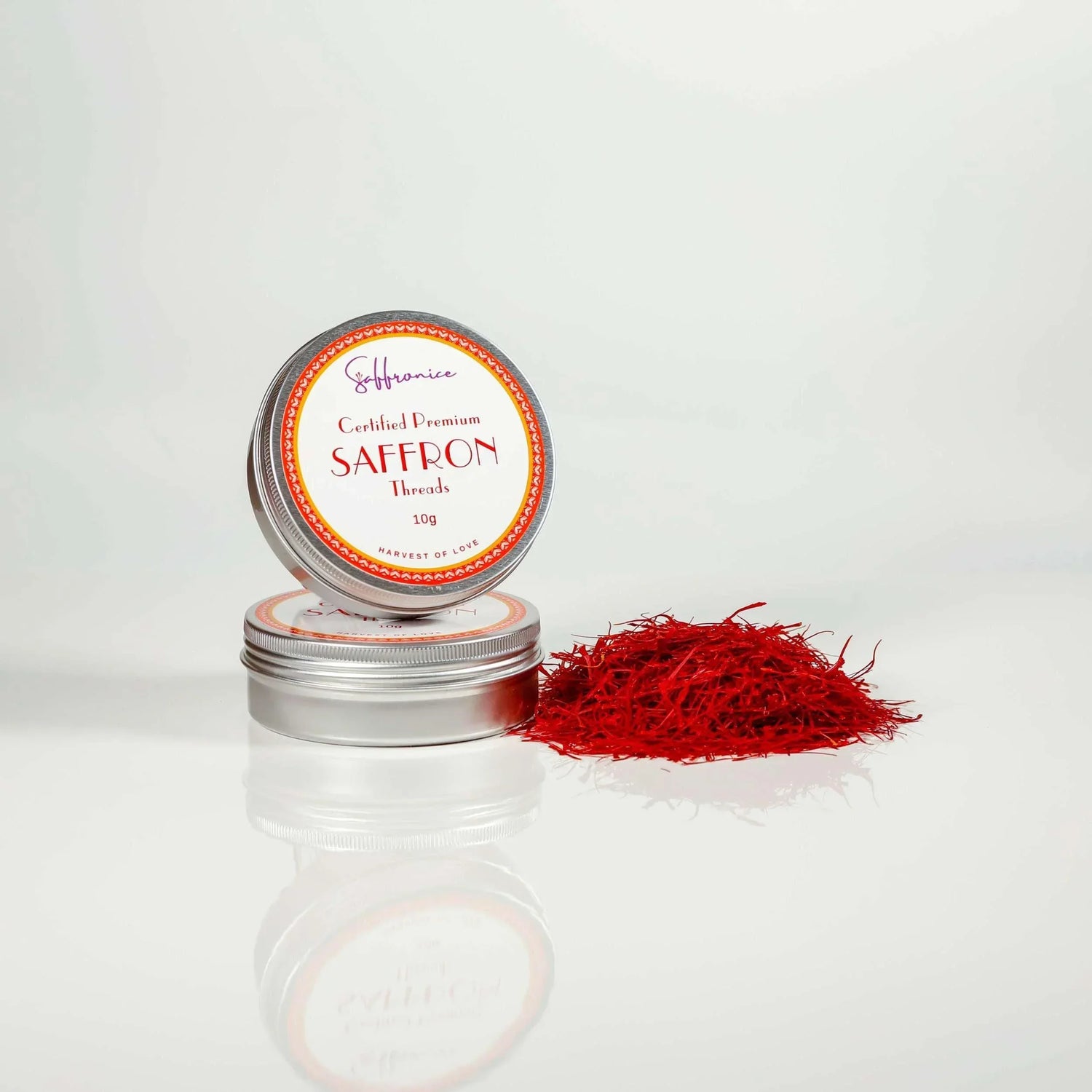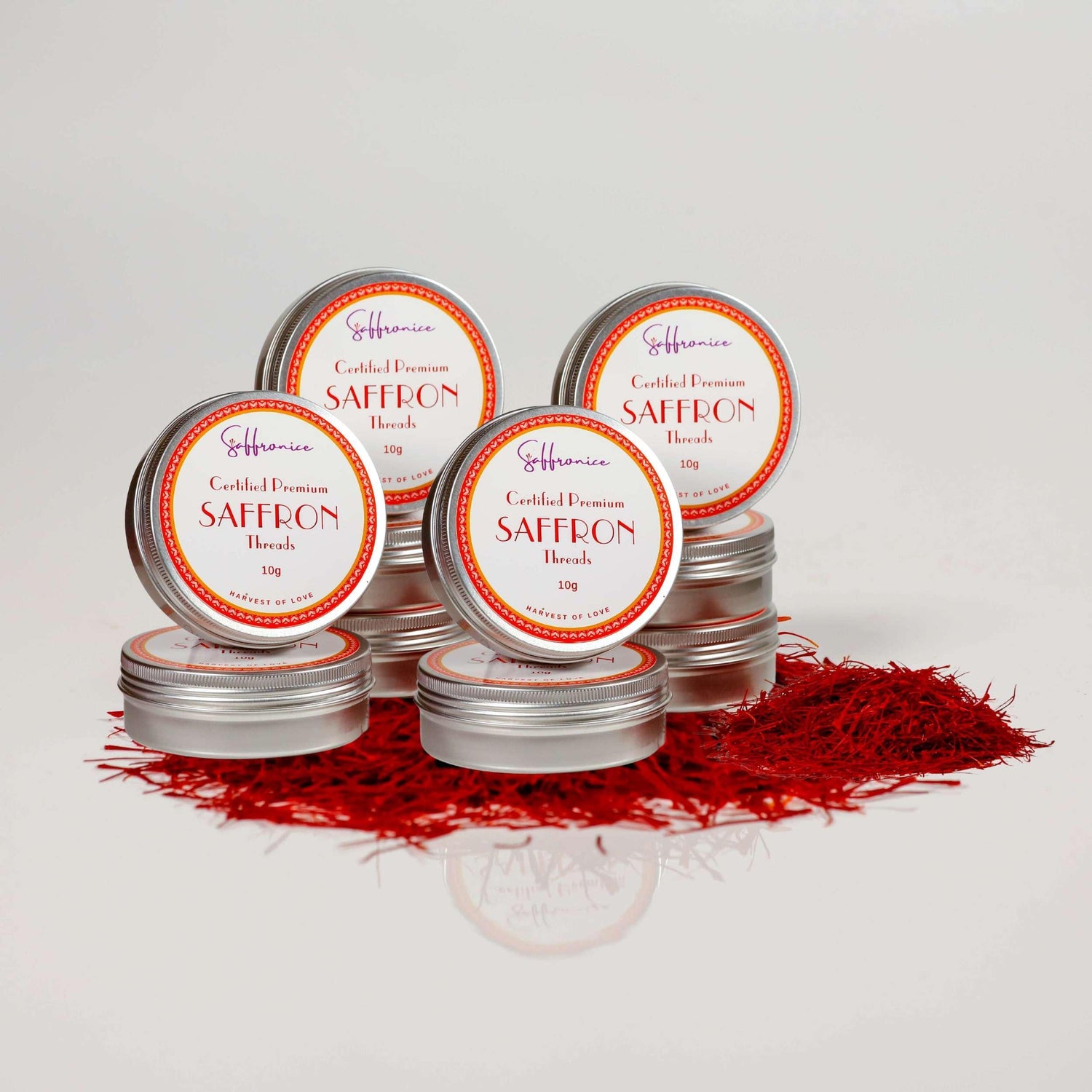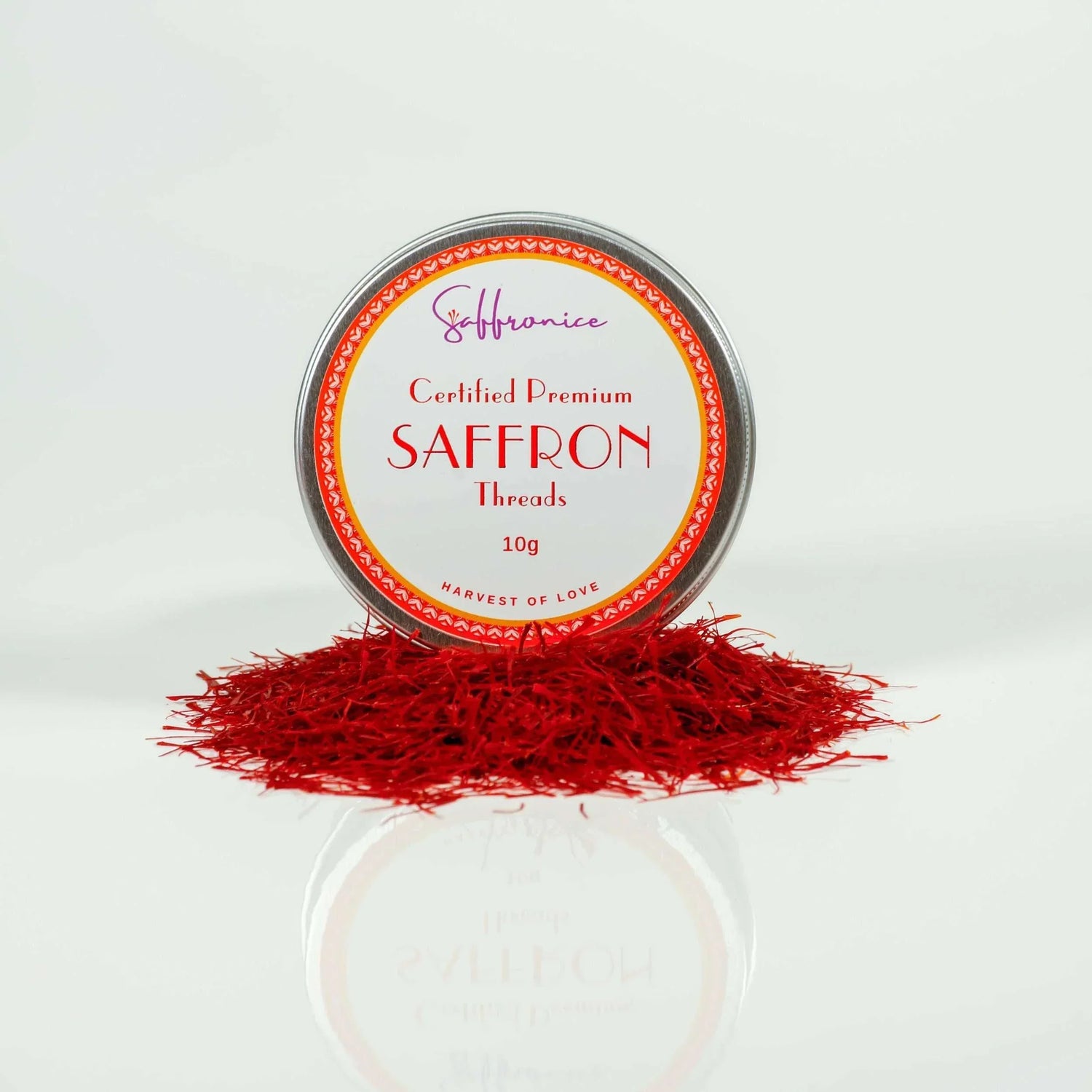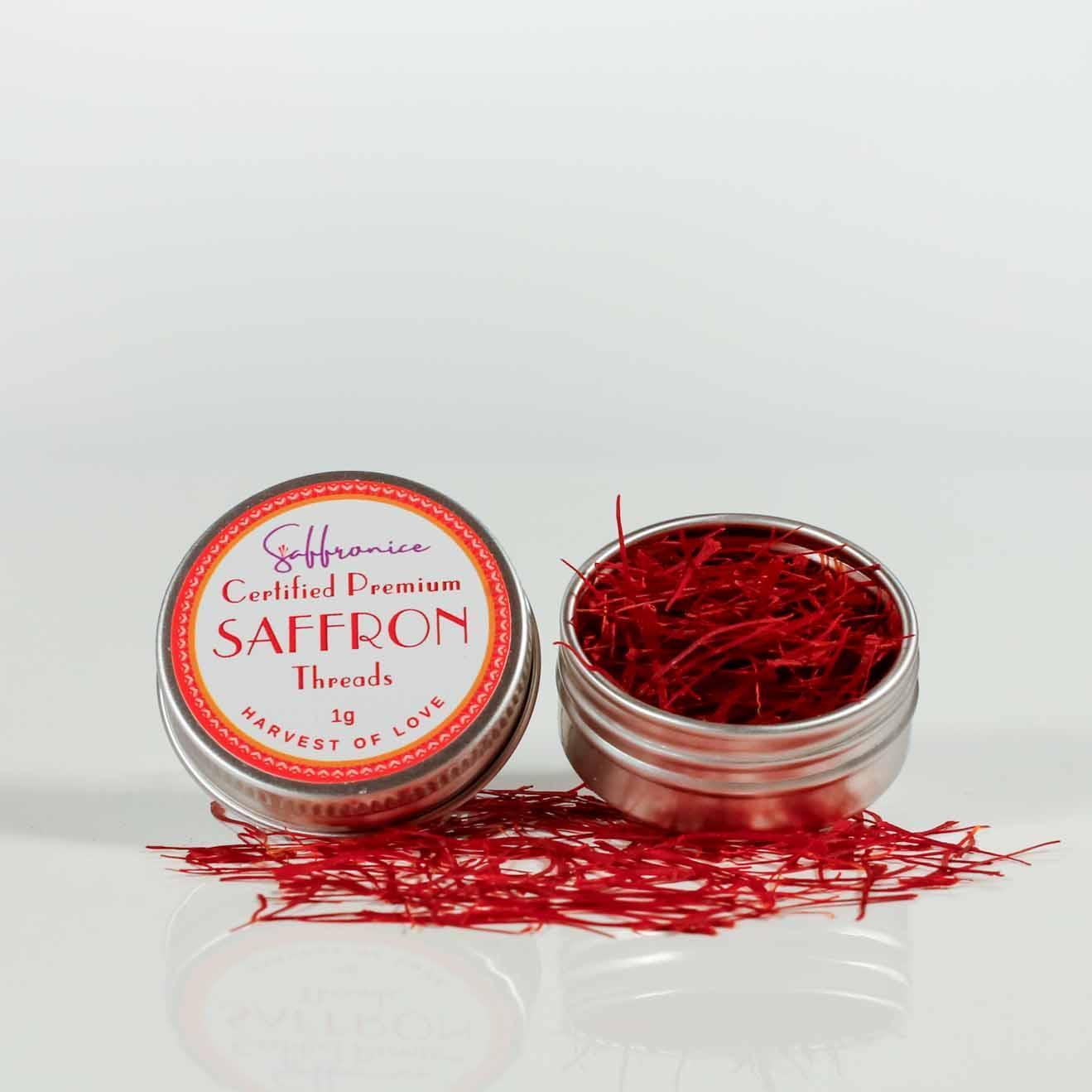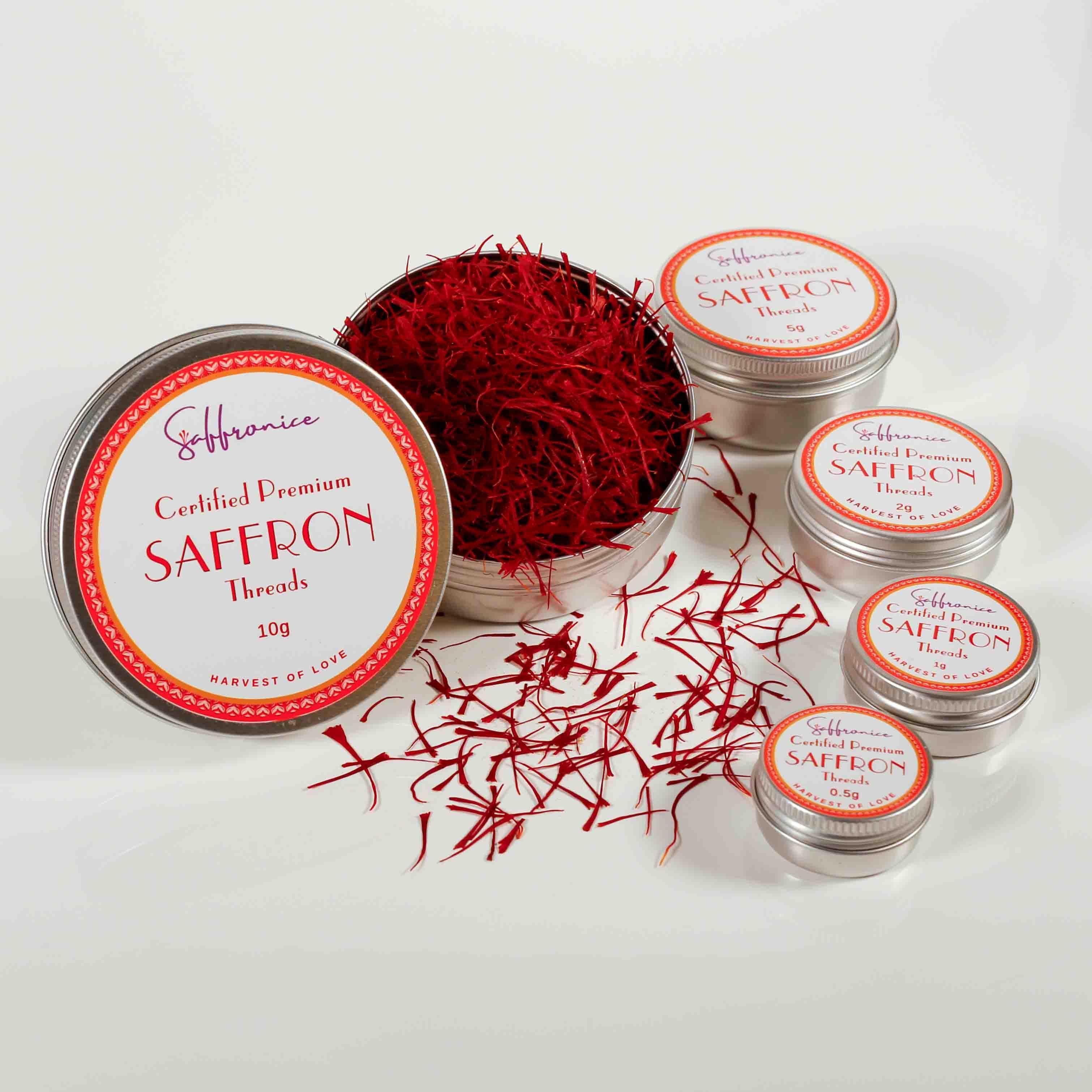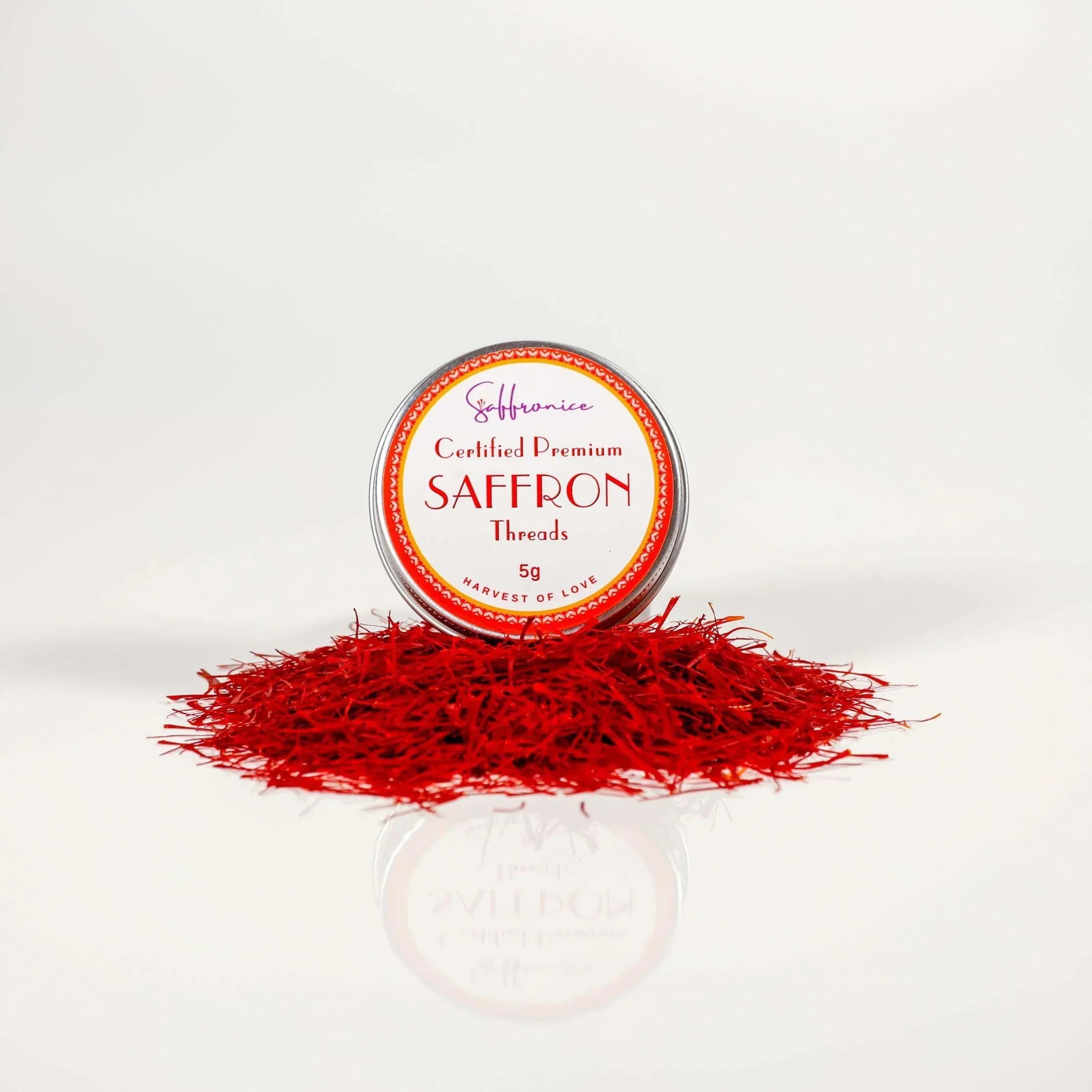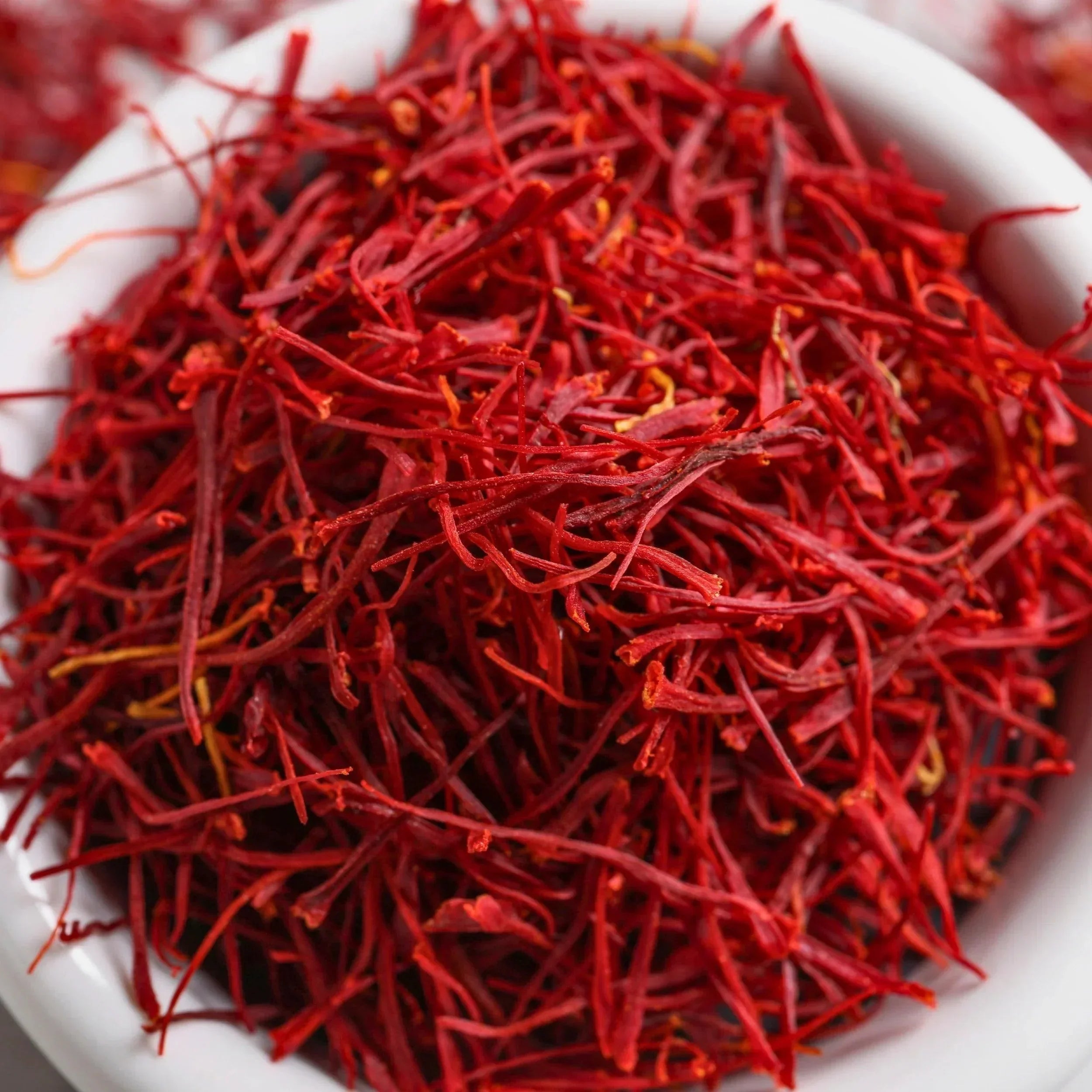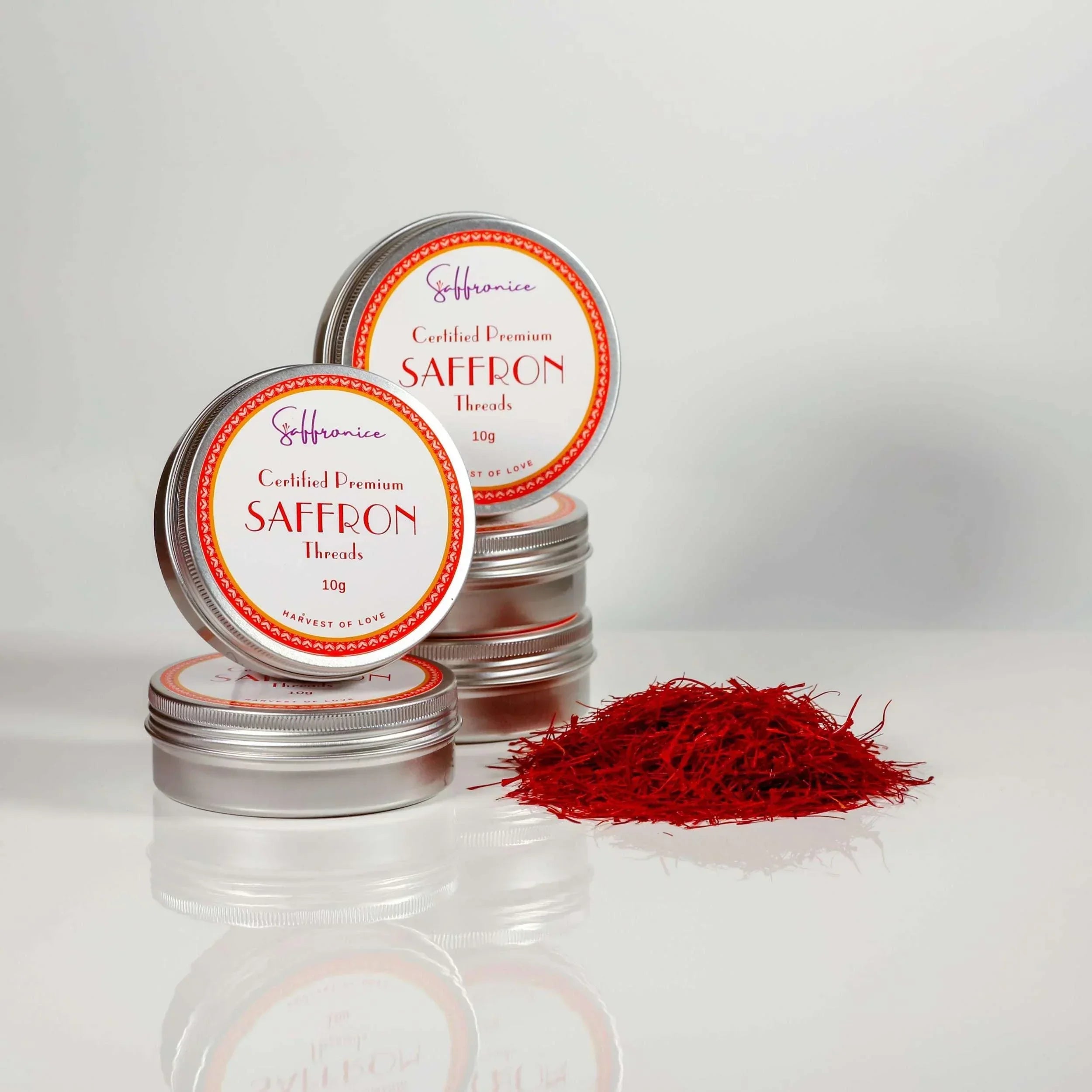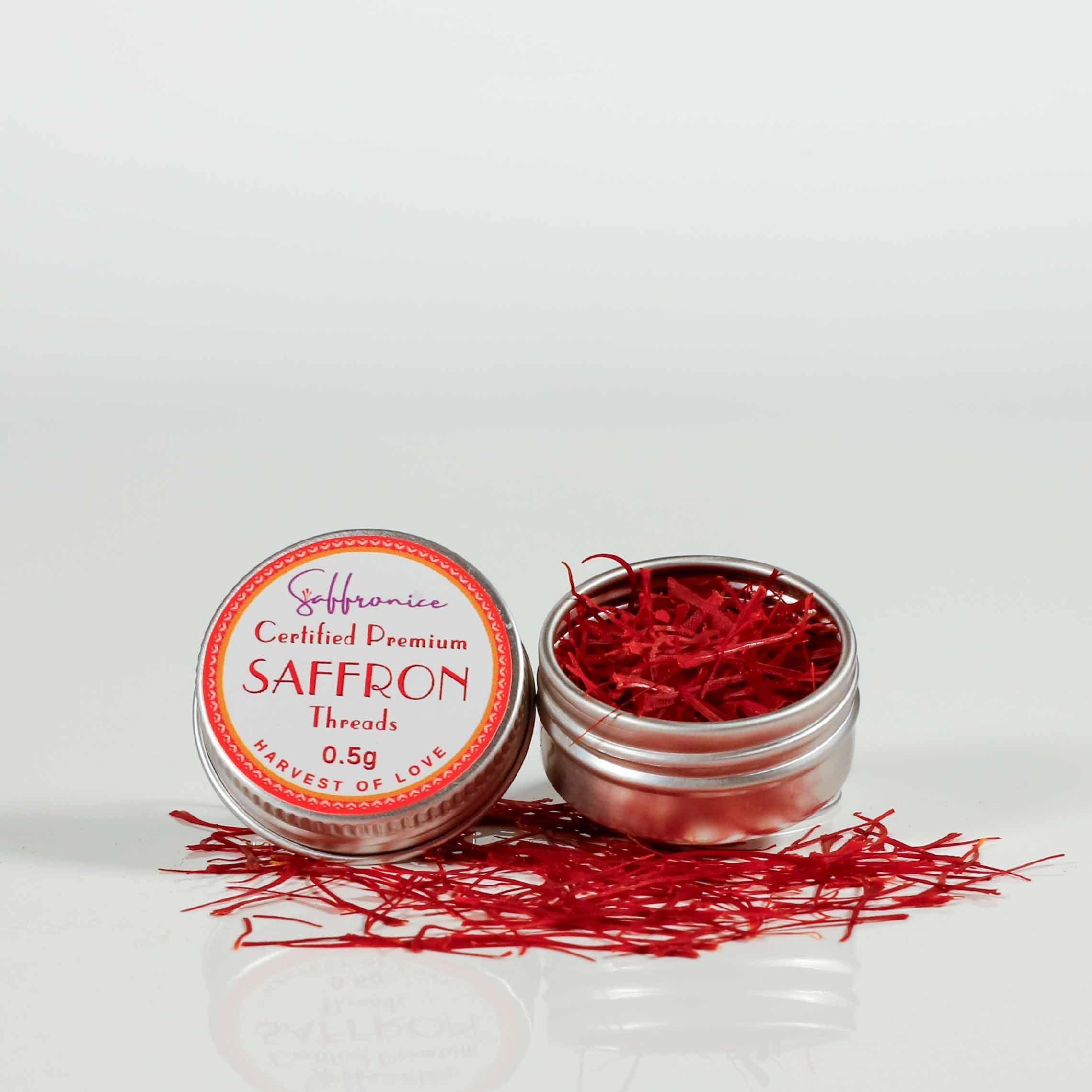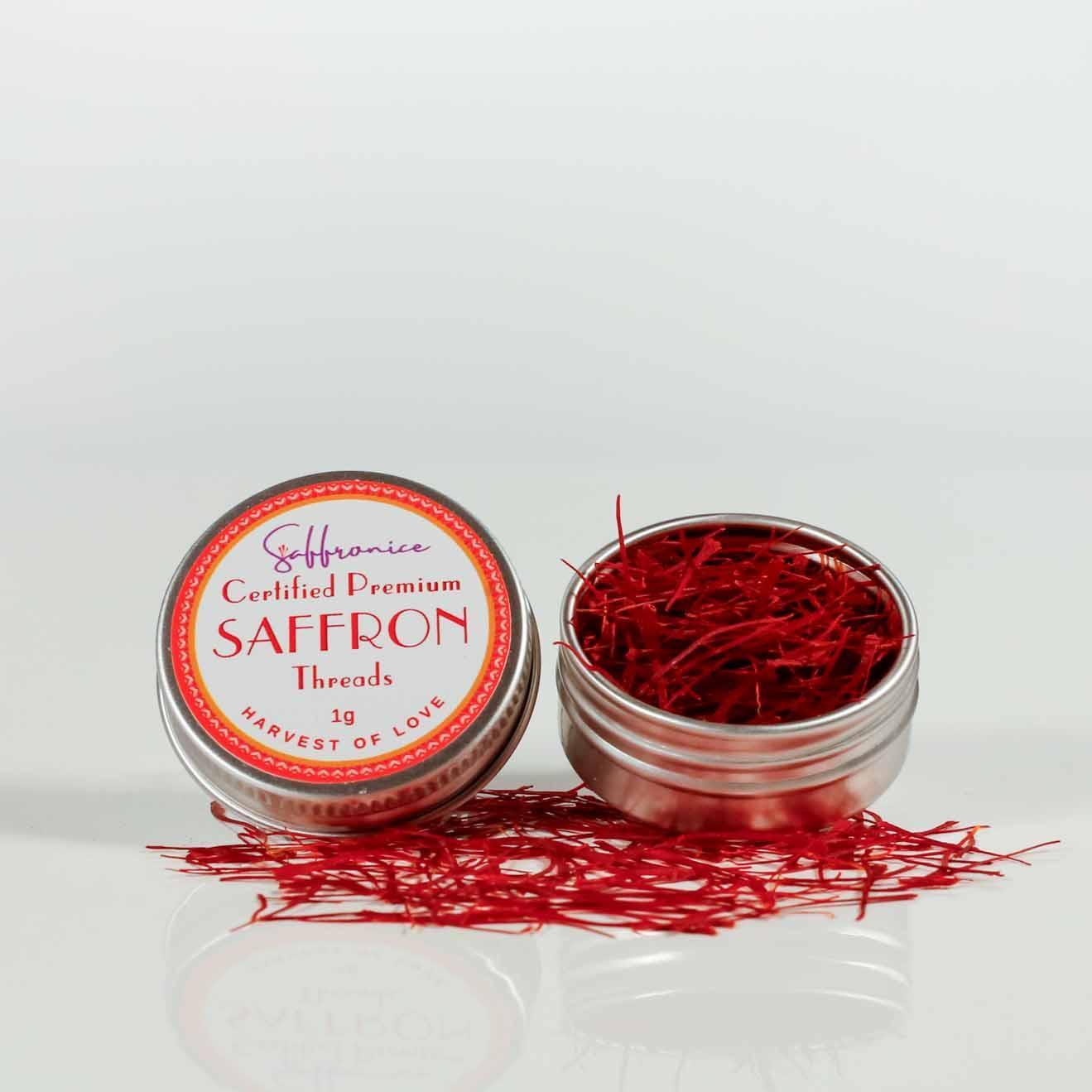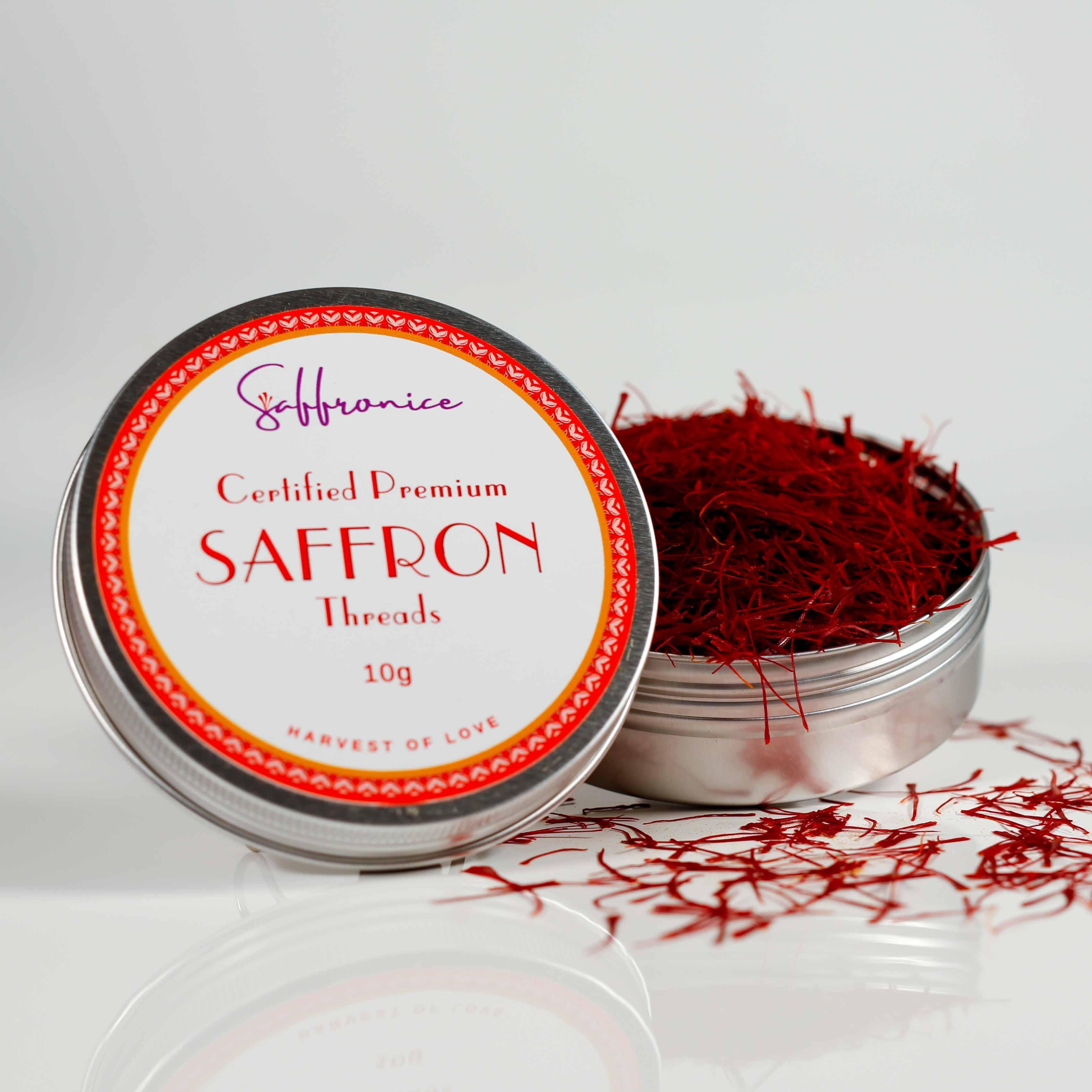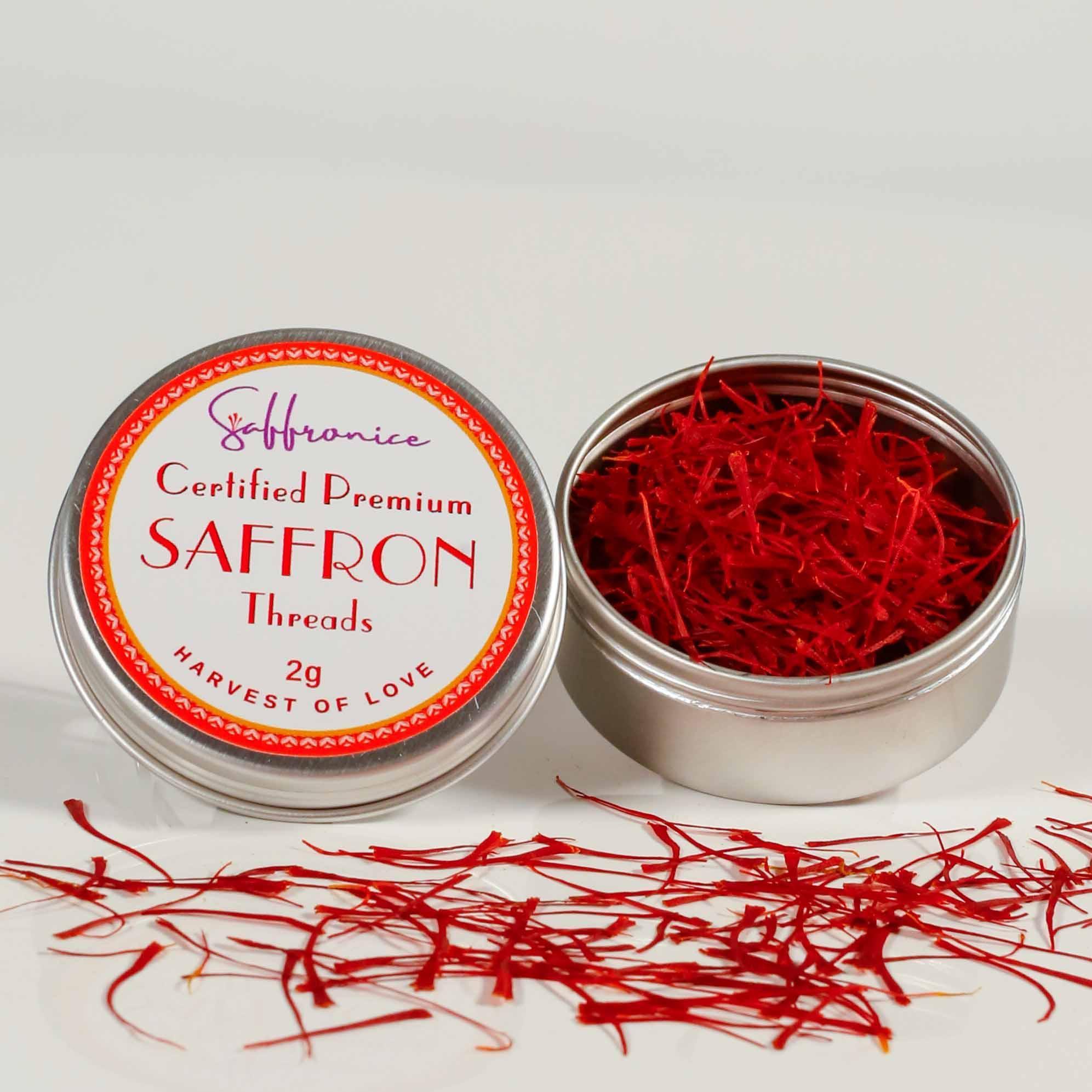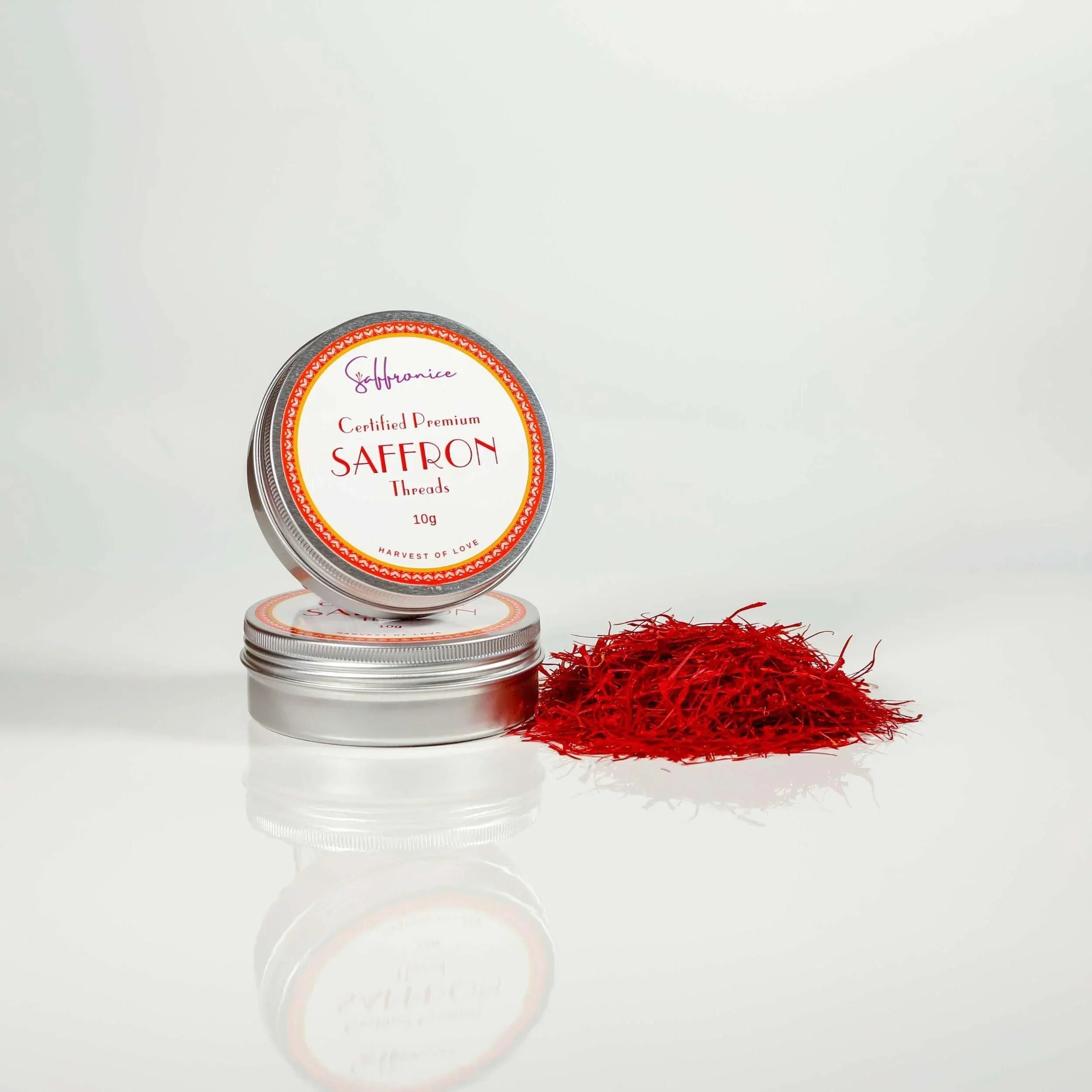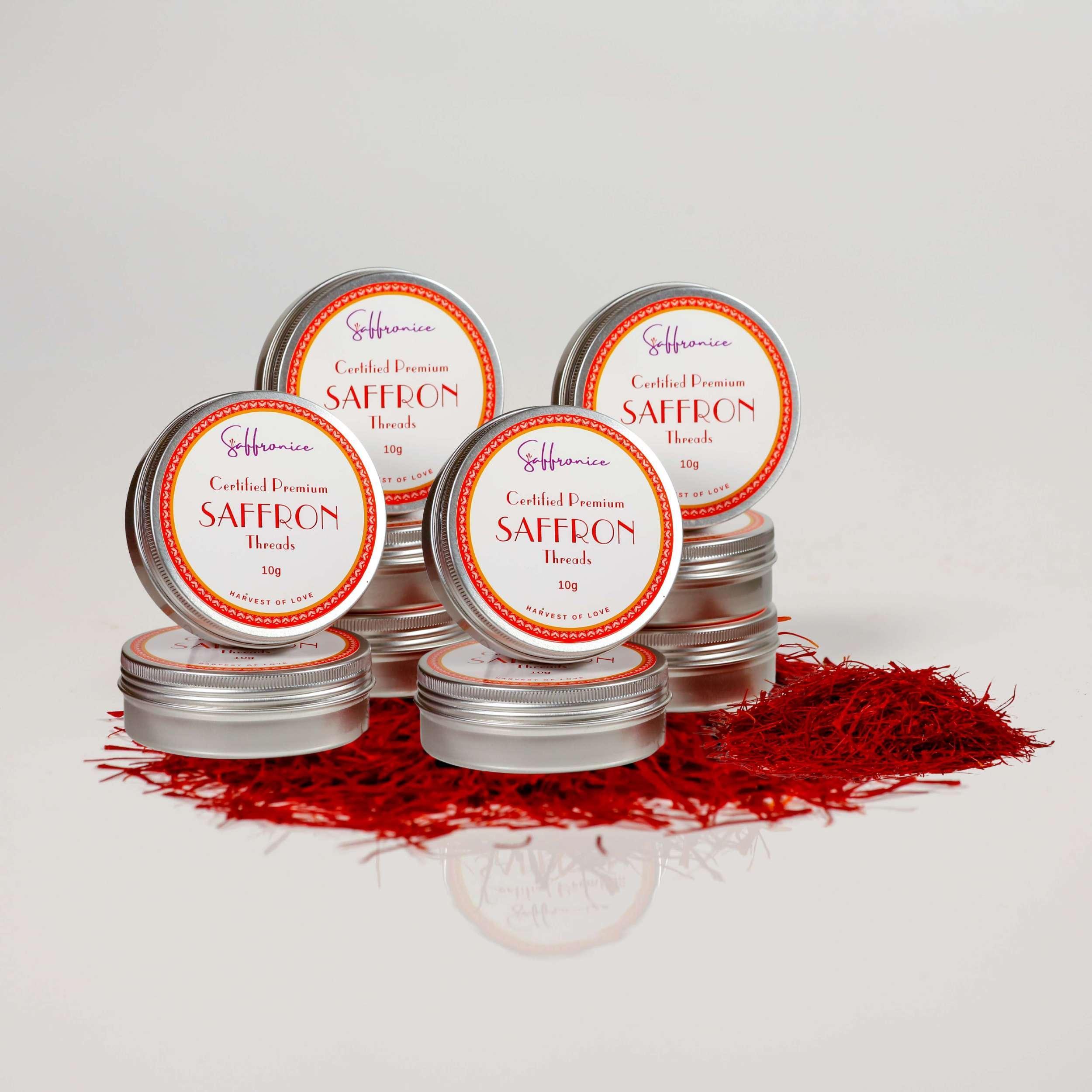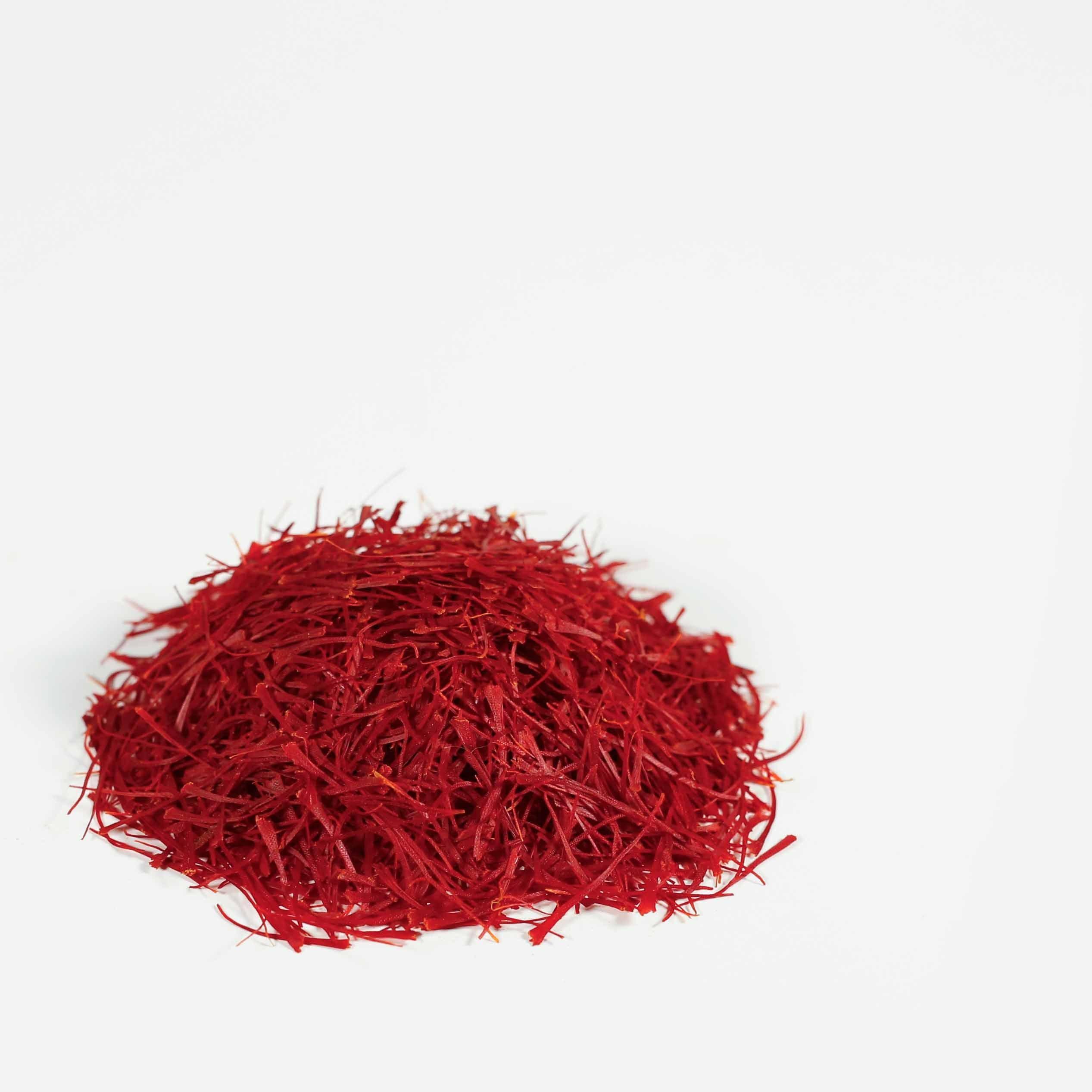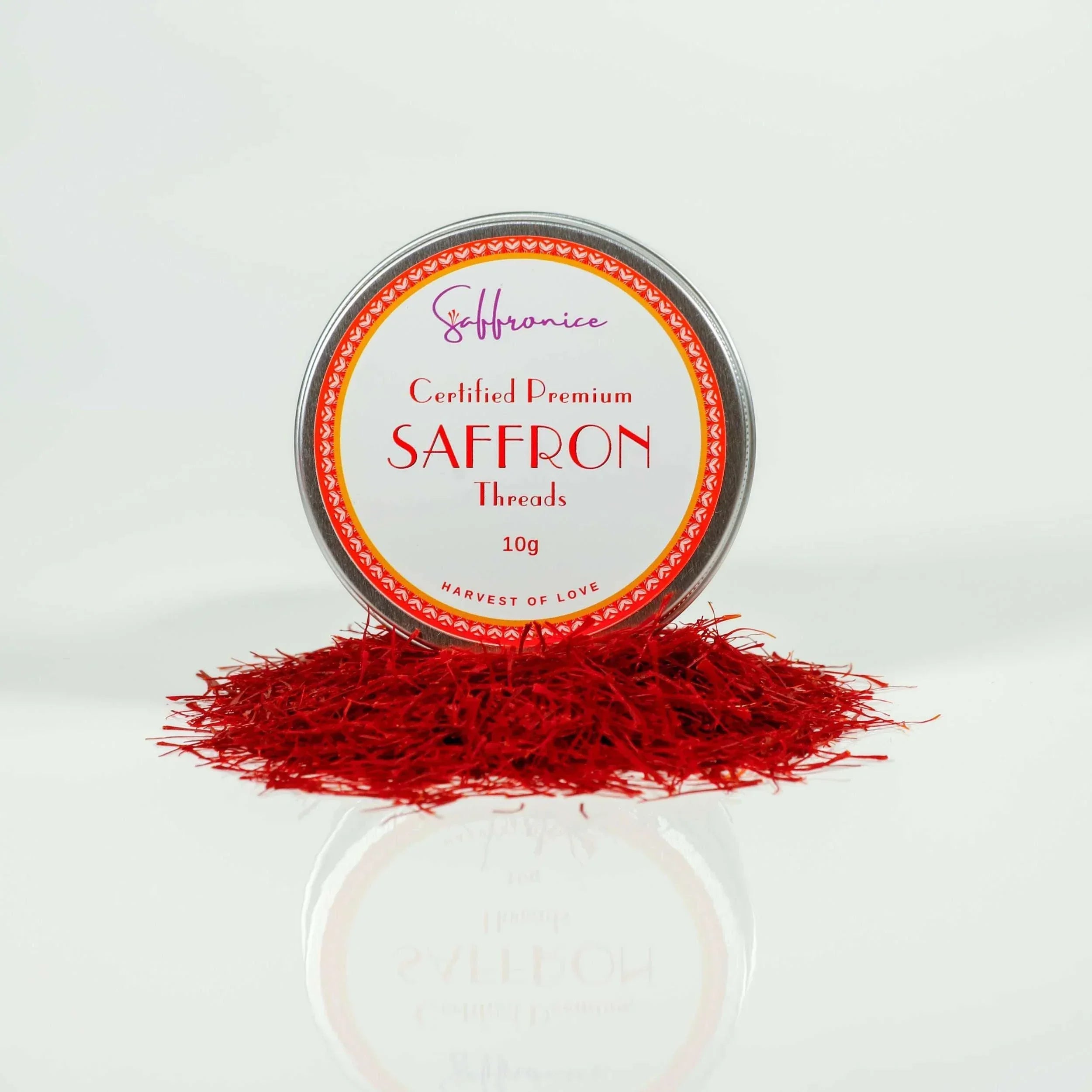Because of Saffron's high cost, many home cooks and professional chefs are searching for effective substitutes for saffron. Whether you want to save money or can't find saffron at your local market, finding a suitable replacement can be important.
Turmeric is a common kitchen staple that some people suggest could mimic saffron’s vibrant color without being too expensive. But can turmeric really replace saffron? The short Answer is NO but in this article we will look closely at both spices and explore whether turmeric can truly be used instead of saffron in your recipes.
Understanding Saffron
Saffron, often known as the "golden spice," comes from the delicate stigmas of the Crocus sativus flower. The process of obtaining saffron is labor-intensive, as it involves hand-picking and drying the threads, which significantly contributes to its high cost.
Unique Flavor Profile
Saffron has a flavor that is difficult to replicate. Its taste can be described as a combination of:
- Sweetness: A subtle sweetness reminiscent of honey that adds depth.
- Floral Notes: Delicate floral undertones that enhance aromatic complexity.
- Earthy Elements: Earthy nuances that provide a grounding balance.

Why Is Saffron So Expensive?
Several factors make saffron one of the most expensive spices:
- Labor-Intensive Harvesting: Each Crocus sativus flower produces only three stigmas. It takes around 75,000 flowers to produce just one pound of saffron.
- Limited Growing Regions: Saffron is mainly grown in Iran, Spain, and India, where specific climate conditions are required.
- Time-Consuming Process: The meticulous hand-harvesting and drying process requires significant labor and attention.
As a result, saffron is highly valued for its unique flavor and vibrant color, making it a sought-after ingredient in kitchens around the world.

The Quest for Saffron Substitutes
Finding a true saffron replacement can be quite the culinary challenge. Saffron’s distinct aroma and flavor, characterized by its sweet, floral, and earthy notes, are nearly impossible to replicate exactly. This leaves chefs and home cooks in a bit of a bind when seeking affordable spices that can mimic saffron.
People often look for alternatives due to:
- Cost: Saffron is one of the most expensive spices in the world.
- Availability: Access to genuine saffron can sometimes be limited based on location or season.
When substituting saffron in recipes, it’s crucial to consider the importance of color versus flavor:
- Color: Many substitutes like turmeric or paprika can effectively replicate saffron's vibrant yellow hue.
- Flavor: Achieving a similar flavor profile is much more challenging if not impossible. While some substitutes may offer an earthy tone, they often lack the complex flavour and floral notes of real saffron.
Balancing these factors becomes key in cooking with saffron substitutes. It’s about finding the right mix that offers both visual appeal and a satisfying taste experience.

Can Turmeric Replace Saffron? The Answer Might Surprise You.
When people think of a vibrant, golden-yellow hue in their dishes, turmeric often comes to mind. It's a kitchen staple known for imparting a rich color that can sometimes resemble the sunlit glow of saffron. But can turmeric replace saffron? Let's dive into this question and explore the nuances.
Turmeric as a Color Substitute
Turmeric is frequently suggested as a saffron substitute primarily for its ability to mimic the bright color. Turmeric's pigment, curcumin, produces an intense yellow hue that can transform any dish visually. This makes it an attractive option when the goal is to achieve saffron-like aesthetics without spending a fortune.
Flavor Differences Between Turmeric and Saffron
While turmeric wins on the color front, the comparison becomes more complex regarding flavor:
- Turmeric Flavor Profile: Turmeric has an earthy taste with slightly bitter and musty notes. It's warm and peppery, bringing a distinctive flavor that stands out in many dishes.
- Saffron Flavor Profile: Saffron boasts sweet, floral notes combined with a subtly earthy undertone. Its aroma is unique—luxuriously sweet and almost honey-like.
Limitations of Using Turmeric as a Direct Replacement
The stark contrast in their flavor profiles highlights why turmeric can't fully replace saffron in recipes where taste is paramount:
- Earthy Taste vs. Floral Notes: Turmeric's robust earthiness doesn't align with the delicate, sweet floral characteristics of saffron.
- Aroma Comparison: The musty aroma of turmeric lacks the complex fragrance that makes saffron so prized.
For additional insights into the differences between these two spices, you may find this ultimate guide helpful.
Impact on Dish Outcomes
Substituting turmeric for saffron in recipes can lead to different outcomes:
- Color Match: The visual appeal remains intact, especially in rice dishes like paella or risotto.
- Flavor Shift: Expect a significant shift in taste. For instance:
- In desserts or lighter fare where saffron's sweetness shines (like in Persian ice cream), turmeric's earthy bitterness might feel out of place.
- Savory dishes may handle the substitution better but will still miss saffron’s signature floral sweetness.

Combining Turmeric with Other Spices
To bridge the gap between color and flavor when using turmeric:
- Mixing with Paprika: Combining turmeric with paprika can enhance both color and flavor. Paprika adds a mild sweetness and depth that complements turmeric's earthiness.
- Suggested Ratios: Start with:
- 1 part turmeric
- 1 part paprika This blend can provide a more balanced profile for recipes typically requiring saffron.
Using these combinations helps achieve not just the visual aspect but also brings some complexity to the flavor profile that might be closer to what saffron offers.
While turmeric shines in adding that beautiful golden hue, it's essential to recognize its limits as a direct saffron substitute, especially concerning flavor and aroma.
Combining Turmeric with Other Spices to Enhance Flavor and Color in Dishes
Benefits of Mixing Turmeric with Paprika for Enhanced Color and Flavor
When it comes to finding the best substitutes for saffron, turmeric often tops the list due to its vibrant yellow color. However, combining turmeric with paprika can elevate both the color and flavor of your dishes.
- Enhanced Color: Turmeric provides a deep yellow hue, while paprika adds a rich reddish tone. Together, they create a visually appealing blend that closely mimics saffron's golden shade.
- Improved Flavor: While turmeric has an earthy, slightly bitter taste, paprika introduces a sweet, smoky flavor. This combination enhances the overall taste profile of your dish.
Suggested Ratios and Combinations for Recipes Requiring Saffron-like Qualities
Achieving the right balance is crucial when substituting saffron. Here are some suggested ratios:
- For Color: Use a 2:1 ratio of turmeric to paprika. For example, if a recipe calls for 1 teaspoon of saffron threads, use 2/3 teaspoon of turmeric and 1/3 teaspoon of paprika.
- For Flavor: If you're looking to balance the flavors more precisely, you might experiment with equal parts turmeric and paprika or adjust based on personal preference.
How to Achieve a More Balanced Flavor Profile with These Combinations
Balancing the flavors is key to making your dishes taste as close to those made with saffron as possible:
- Start Small: Begin by adding small quantities and gradually increase until you achieve the desired color and taste.
- Taste Test: Continuously taste your dish as you add the spices. This ensures you don't overpower other flavors in your recipe.
- Additional Spices: Consider adding a pinch of cinnamon or nutmeg for an extra layer of complexity that complements both turmeric and paprika.
Experimenting with these combinations can help you find a balanced flavor profile that works well as one of the best substitutes for saffron in cooking.

Other Alternatives to Saffron You Might Consider
Safflower ("Mexican Saffron")
Safflower, often referred to as "Mexican saffron," is one of the popular saffron substitutes. It offers a bright yellow-orange color similar to saffron but lacks its unique flavor profile.
Pros:
- Inexpensive
- Great for adding color
- Easily available
Cons:
- Lacks the distinct flavor of saffron
- Limited in enhancing aroma
Annatto Seeds
Annatto seeds are another excellent alternative for achieving the rich color that saffron imparts to dishes.
Pros:
- Strong coloring agent
- Adds an interesting earthy flavor
- Cost-effective
Cons:
- Flavor may overpower delicate dishes
- Not suitable for recipes requiring sweet undertones
Dried Calendula (Marigold Flowers)
Dried calendula petals, also known as marigold flowers, are used in various culinary applications and can serve as a saffron substitute primarily for their color.
Pros:
- Brightens up dishes with its vibrant color
- Slightly peppery taste adds uniqueness
- Affordable
Cons:
- Minimal flavor impact compared to saffron
- May require blending with other spices for added depth
Price Comparison Between Genuine Saffron and Its Alternatives
Genuine saffron is known as one of the most expensive spices in the world due to its labor-intensive harvesting process. Here's a quick look at price comparisons:
- Genuine Saffron: Approximately $5,000 per pound.
- Safflower: Around $10-$20 per pound.
- Annatto Seeds: Approximately $2-$3 per ounce.
- Dried Calendula: Roughly $15-$25 per pound.
Recommendations Based on Specific Dishes or Cuisines
For those looking to substitute saffron in recipes:
- Paella or Risotto: Try combining annatto seeds with a bit of turmeric for both color and a touch of earthiness.

Cooking Tips Using Saffron Alternatives Successfully
Cooking with saffron substitutes can be a fun culinary experiment. Here are some practical tips to help you get started:
Incorporating Substitutes into Traditional Recipes
- Ratios Matter: When using turmeric or paprika as a saffron substitute, start with small amounts. For instance, 1/4 teaspoon of turmeric can replace a generous pinch of saffron.
- Mix and Match: Combine turmeric with other spices like paprika to achieve both color and a more complex flavor profile.
Adjusting Quantities for Desired Flavors and Colors
- Taste Test: Since the flavor profiles of substitutes differ from saffron, taste your dish frequently to ensure balance.
- Color vs. Flavor: Prioritize what you need more—if it's the golden hue, use turmeric; if it’s flavor, consider mixing in other spices like cumin or coriander.
Best Dishes for Saffron Alternatives
- Rice Dishes: Turmeric works well in paellas, biryanis, and risottos for that signature yellow color.
- Soups and Stews: Adding a pinch of turmeric can enhance the broth's color without overpowering the dish.
- Baked Goods: Consider using safflower or annatto seeds to maintain the visual appeal without altering the taste drastically.
Experimenting with saffron substitutes opens up new culinary possibilities. Remember, while these alternatives offer versatility, they bring their unique flavors and should be used thoughtfully to complement your recipes.

Embracing the Versatility of Saffron Substitutes While Recognizing Their Limitations
Experimenting with saffron substitutes can be both exciting and rewarding. Trying different alternatives helps you understand how to use saffron alternatives in recipes effectively, ensuring your dishes maintain vibrant colors and delightful flavors.
Key Points to Remember:
- Versatility: Turmeric, safflower, and annatto seeds offer unique benefits that can enhance your culinary creations.
- Limitations: While these substitutes can mimic the visual appeal of saffron, they often fall short in replicating its unique aroma and flavor.
Encouragement for Culinary Adventurers:
- Don’t hesitate to mix turmeric with other spices like paprika to achieve a balanced flavor profile.
- Explore various combinations and ratios that work best for your specific dishes.
- Keep in mind that while these substitutes are great for color, the authentic taste of saffron remains unmatched.
Final Thoughts on Authentic Saffron:
While experimenting with substitutes is a fun way to diversify your cooking, there’s no replacing the genuine article. Authentic saffron brings unparalleled depth and complexity to any dish, making it truly irreplaceable in certain recipes.
Buy Genuine Saffron from Trusted Sources
When it comes to capturing the true essence of saffron's irreplaceable flavor, there's no substitute for the real deal. If you're after that authentic taste, buy genuine saffron from trusted sources like saffronic.com.
Why choose genuine saffron?
- Unmatched aroma and flavor: Nothing else can replicate saffron's unique combination of sweet, floral, and earthy notes.
- High-quality guarantee: Reputable sources like Saffronic.com ensure you get pure, premium-grade saffron.
Explore the richness of genuine saffron and elevate your culinary creations by visiting Saffronic.com for your next purchase.


